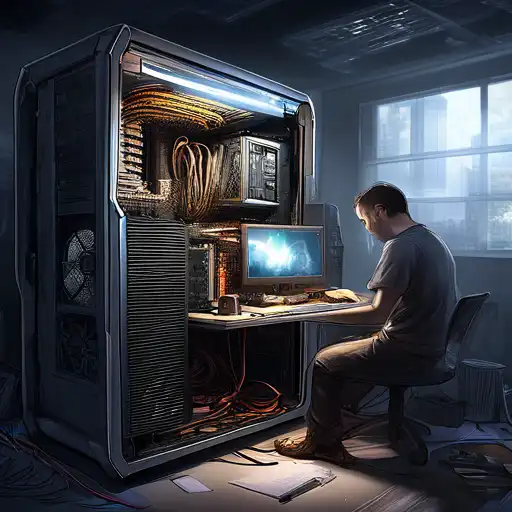Introduction to PC Building
Building your own PC can be a rewarding experience, offering not only a sense of accomplishment but also the opportunity to customize your machine to your exact needs. Whether you're a gamer, a content creator, or just someone looking for a powerful workstation, this guide will walk you through the basics of assembling your own computer.
Why Build Your Own PC?
Building a PC allows you to select each component based on your specific requirements, ensuring optimal performance and value. It can also be more cost-effective than buying a pre-built system, especially if you're willing to shop around for deals.
Essential Components for Your Build
Before you start, you'll need to gather all the necessary components. Here's a list of the essential parts:
- Processor (CPU)
- Motherboard
- Memory (RAM)
- Storage (SSD or HDD)
- Power Supply (PSU)
- Case
- Graphics Card (GPU) - if not integrated into the CPU
Choosing the Right Parts
Selecting compatible components is crucial. For example, your CPU must fit the motherboard's socket, and your case must accommodate the size of your motherboard. Researching each part's specifications and compatibility is a must.
Step-by-Step Assembly Guide
Once you have all your components, follow these steps to assemble your PC:
- Prepare your workspace and ensure you're grounded to prevent static electricity damage.
- Install the CPU, RAM, and storage onto the motherboard before placing it in the case.
- Mount the power supply and connect it to the motherboard and other components.
- Install the graphics card if you're using one.
- Connect all cables, including those for power, data, and front panel connectors.
- Close the case and connect your monitor, keyboard, and mouse.
Installing the Operating System
After assembling your PC, you'll need to install an operating system. Whether you choose Windows, Linux, or another OS, ensure you have a bootable USB drive or DVD ready for installation.
Tips for First-Time Builders
Building a PC for the first time can be daunting, but here are some tips to help you through the process:
- Take your time and double-check each step.
- Watch tutorial videos if you're unsure about any part of the process.
- Keep your components' manuals handy for reference.
- Don't force anything; components should fit together smoothly.
Testing Your Build
Before celebrating, power on your PC to ensure everything works correctly. If you encounter issues, refer to troubleshooting guides or seek help from online communities.
Conclusion
Building your own PC is an exciting project that can save you money and give you a deeper understanding of how computers work. With the right preparation and patience, anyone can assemble their own custom machine. For more tech guides and tips, check out our other articles on technology and DIY projects.
